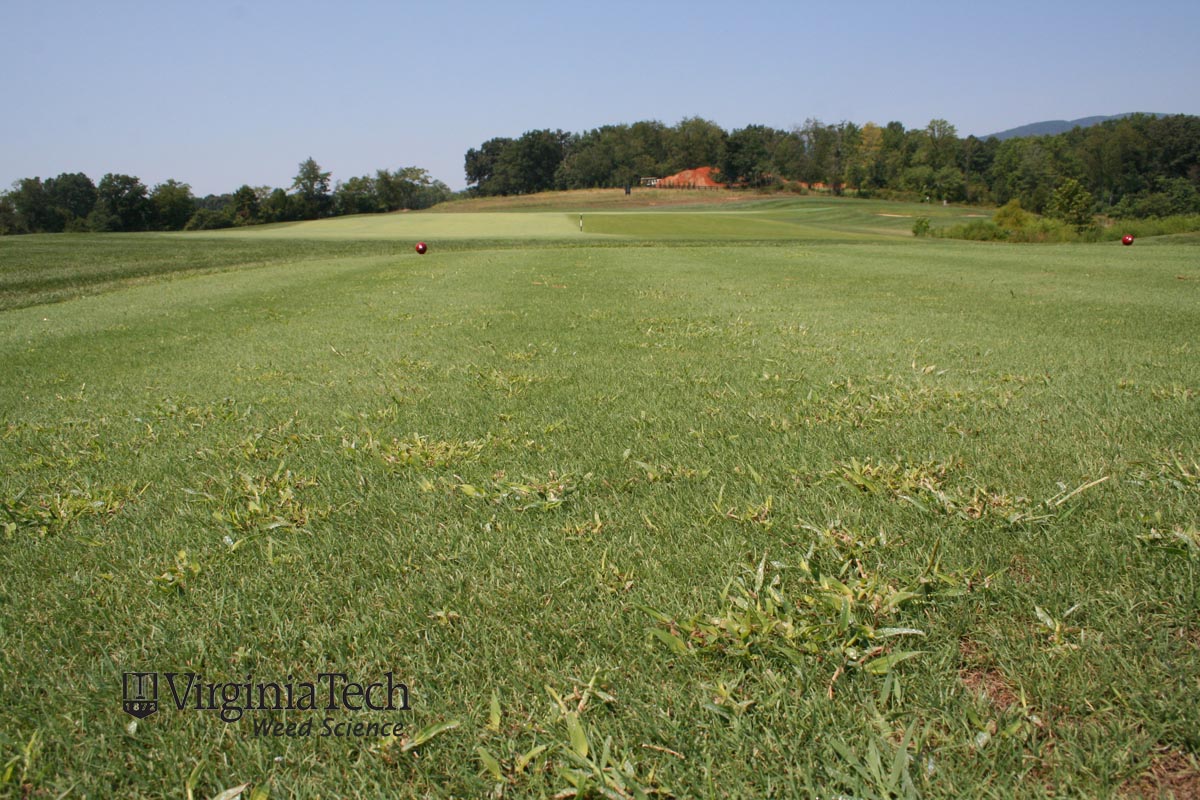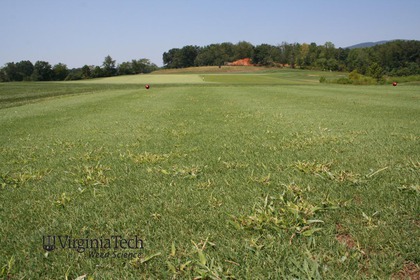smooth crabgrass
Family
PoaceaeScientific Name
Digitaria ischaemumOther Common Names:
small crabgrass
Synonyms (former Scientific Names):
Digitaria ischaemum var. mississippiensis
Syntherisma ischaemum
Panicum ischaemum
Habit
Although smooth crabgrass typically acts as an annual, it may persist as a perennial. Typically, smooth crabgrass germinates in spring, grows during the summer, sets seed in the fall, and dies in the winter. Smooth crabgrass can withstand close mowing heights and is highly competitive with desirable turfgrass
Leaves
Leaves have smooth edges and typically lack hairs. Veins are inconspicuous and the leaf surface is smooth and light green.
Identifying Characteristics
Smooth crabgrass usually lacks hairs unlike large crabgrass or southern crabgrass which are completely hairy and marginally hairy, respectively. Smooth crabgrass has a large membranous ligule like other crabgrass plants. Older smooth crabgrass plants are red at the base of the plant. The collar area is usually smooth but may have a few short hairs.
Flower Seed Head
Seedheads have three to five spikelets with multiple seeds in an open arrangement. Spikelets are borne on a slender smooth stalk and are usually about 8 inches tall but may be much shorter if the area is mowed regularly.
Seed Fruit
Seed are light brown and about 1/16 to 1/8 inch long and about 1/16 inch wide. Seed are pointed at both ends and flat to oval in thickness. Seed may have short hairs.
Where Found
Most types of turfgrass. May tolerate close mowing typical of putting greens or close-cut fairways. Smooth crabgrass and large crabgrass make up most of the crabgrass populations in Virginia lawns and turfgrass areas.
Leaf Hair on Upper Surface
Varies:
no hairs,
hairs on basal half only
Leaf Arrangement
rolled in bud
Mature Leaf Width
Varies:
less than 5 mm,
6 to 15 mm
Stem
flat or oval
Seedhead
multiple spikes
Root Structure
fibrous
Life Cycle
summer annual
Auricle
not present
Ligule
membrane
Ligule Length
Varies:
less than 1 mm,
1-2 mm,
2-3 mm
Plant Type
Grass












